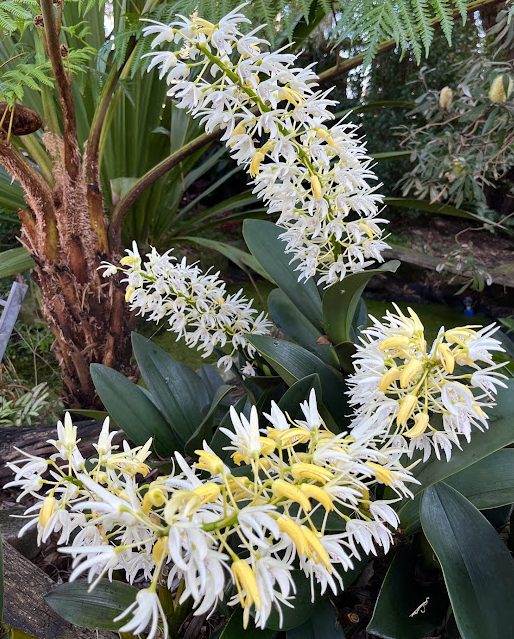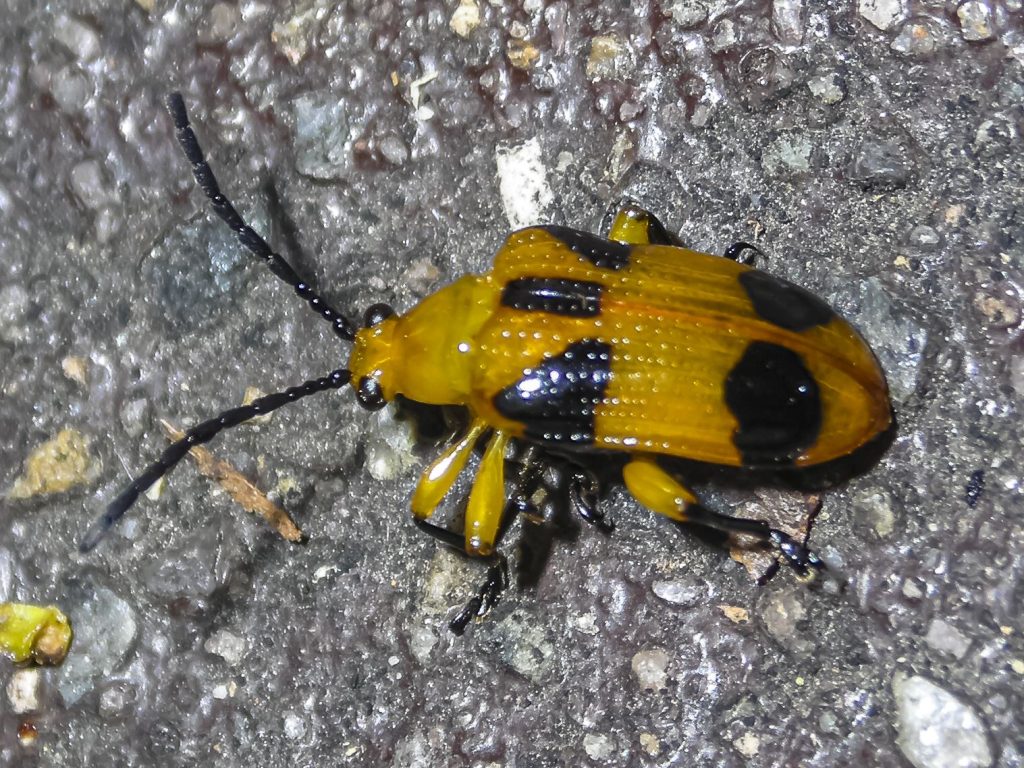I grew up in Sydney with a clump of neglected “Rock Lilies” in our suburban garden. Despite little attention they survived and flowered profusely each spring and were even used in my aunt’s wedding bouquet.
My specimens have been handed down through a couple of generations of the wider family so they have some history. I have short cane and long cane varieties. The long cane variety, which grow high up in the rainforest canopy, came from the Dorrigo area and would have been collected from the wild around 1910 when my great grandfather pioneered a dairy farm. This was first at Deer Vale, then Bostobrick and later just above Dorrigo township. I recently saw similar plants flowering in the canopy of rainforest west of Forster. They grow best in part shade in rotted bark and like a regular feed. They need air around their roots.
The short cane variety grow on rocks and leaf litter in full sun and also in part shade, so they are “rock orchids”, not ground orchids and can tolerate more sun. Mine would have come from the Central Coast and Sydney areas around 1935 and later. A few came with the purchase of our original cottage at Bundeena. We can now have up to 150 spikes of D. speciosum flowers each spring and some have delightful fragrance.


Containers and Growing Medium
Large plastic pots and troughs are ideal. They can be moved out of hot sun in summer and back for winter. Winter sunshine is essential for good flowering. I bury large pots half into the garden to prevent the pots drying out and I erect shade cloth over them during the hottest times to prevent sunburn. Long cane varieties cannot tolerate hot sun. I use large size pine bark, rotted if possible for medium and apply some dolomite and regular feedings of blood&bone, general fertiliser or Osmocote during warmer months, with watering. Only occasional water is required in winter.
Dendrobium beetle.
The Dendrobium beetle is enemy number one. This small orange and black beetle will eat the surface of young soft leaves and later lay eggs in the soft tissue of new tubers. The hatching lavae eat the tuber from the inside and the tuber soon collapses into a green mush. Twelve months growth gone forever. Look out for freshly damaged leaf surfaces. The beetles always appear in pairs so I visually check new leaves regularly in the growing season. When I spot a beetle I look for its mate then carefully put one hand under them and pick it up with the other hand. Usually the beetle will react by rolling into a ball and dropping off the leaf, hopefully into my hand for disposal. Then catch the second one.
If the numbers are too large to catch by hand or if they are into the tubers, a systemic pesticide such as Richgrow Bug Killa, may be your last resort to save your collection. Only use small amounts. Half a teaspoon or less of granules is sufficient for a large pot. It is harmful to bees so do not use on flowering plants.

Slugs and Snails can also have an impact. As soon as you see flower spikes developing, apply a little snail bait amongst the bulbs. Slugs and snails will eat you precious buds while you sleep.
Invasive ferns
We like ferns, but not in our orchid clumps. Weed out any ferns and grasses before they take hold. I noticed a large clumps D. speciosum at The Royal Botanic Gardens recently, growing on a large rock, eaten by beetles and invaded by ferns; a poor example of a beautiful native species.
